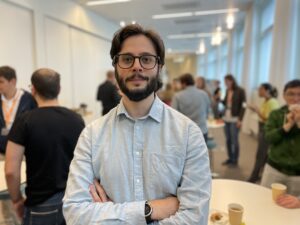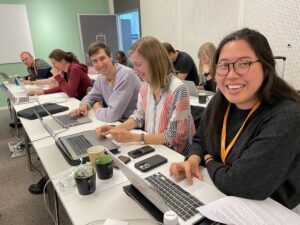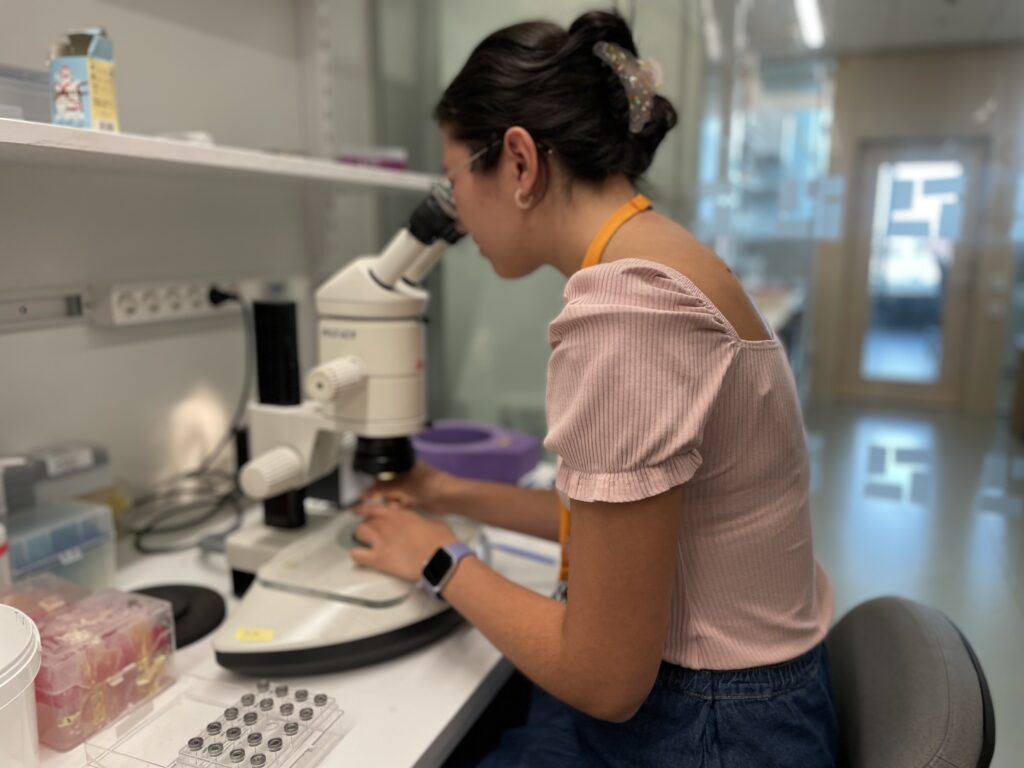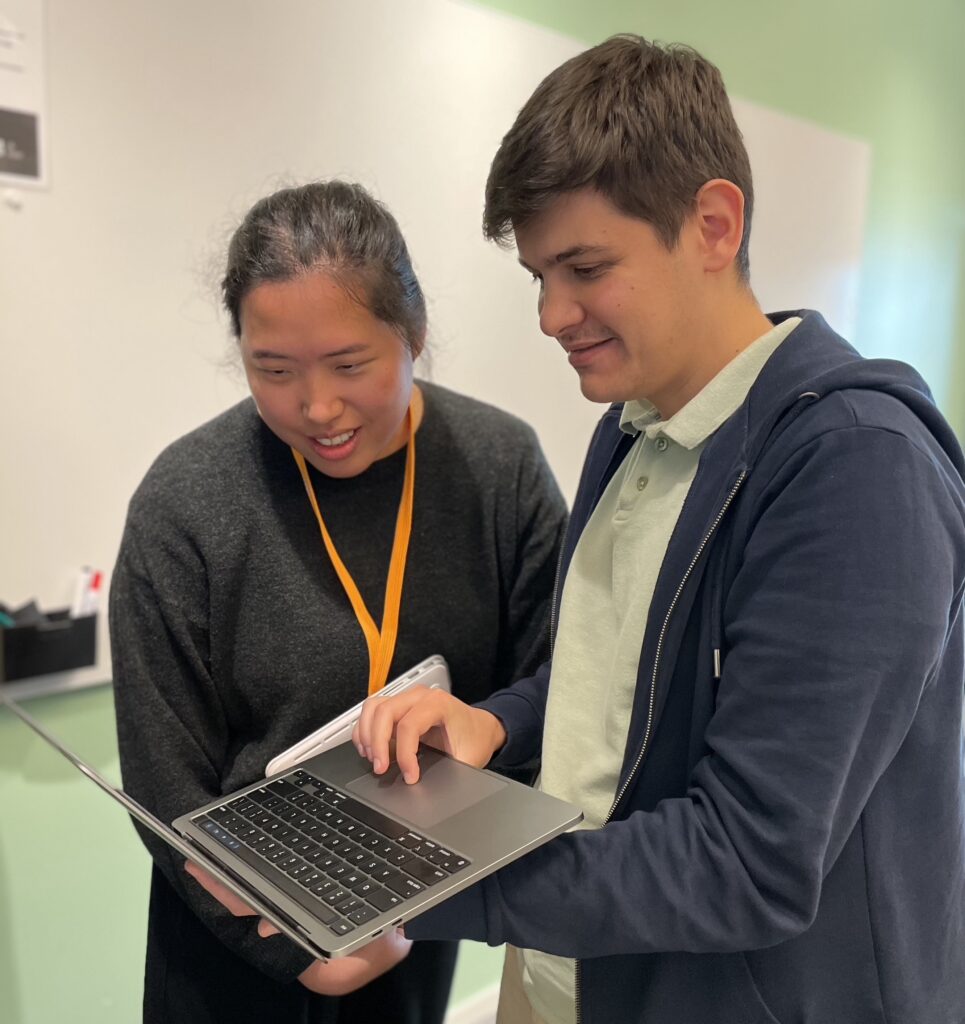In late August 2022, InfraLife arranged a well-visited two-week course in integrative structural biology with lecturers from ESS, MAX IV and SciLifeLab. The purpose was to highlight how structural biology techniques can be combined to address complex biological questions.
The course presented available infrastructure at the three national infrastructure facilities and encouraged networking and cross-infrastructure collaborations to tackle questions on an atomic and molecular level. Read more about the course content here.
We got the opportunity to ask Claudio Mirabello, who was one of the lecturers, and Mary Dayne Sia Tai, who took the course as a student, about their thoughts on, and experiences from the course.
Principal Research Engineer Claudio Mirabello gave a course lecture on ”Protein structure prediction problem: from Anfinsen to AlphaFold”. Claudio works at National Bioinformatics Infrastructure Sweden (NBIS) as an expert focusing on proteomics, machine learning, and structural bioinformatics. Mary Dayne Sia Tai is a Ph.D. student from the Department of Biomedicine at the University of Bergen.


Mary Dayne, why did you take the course?
“My goal when I signed up for the course was to learn about the different structural biology techniques and how they can be used to complement each other. I also hoped to not only learn the theory behind these techniques but also to find ways on how they can be used for my Ph.D. project. Being able to travel around Sweden was definitely a bonus!”
Claudio, within your field of expertise what do you think most students were unaware of prior to the course?
“The main point that I try to drive home during my lecture is that the information that is used to perform computational structure prediction – with tools like AlphaFold – is complementary to what is used during experimental determination. While an experimentalist will usually focus on a single protein sequence to express it, purify it and determine its structure, prediction methods will leverage evolutionary information coming from up to tens of thousands of proteins that share a common ancestor. This means that prediction methods are not – and most likely will not become – an alternative to experimental methods. Rather, they are an extra source of information and a powerful new tool for all experimentalists.”
Mary Dayne what type of lecture setting do you prefer, and how well was that met with the course?
”I do prefer a mix of theory and practice. Many methods seem so promising in theory, but without knowing the practical aspects beforehand, it could lead to us losing a lot of time trying something that would likely not work. Being aware of these practical considerations gives us an upper hand to know what to anticipate and finding out which techniques would suit our projects best. Knowing what other techniques could be used “to check” our samples/proteins first was also very helpful as these data could give us a better chance at success and help us understand our data when they do not turn out how we expect. Having some hands-on experience was also great and gave us a taste of how it was like to work with the different techniques – from analyzing sample data to fishing crystals from a crystallization plate. The practical where we were given the opportunity to fish crystals was definitely a highlight for me since I was interested in crystallography, but have not yet had good enough crystals to fish. Crystallographers definitely make it look so easy!”

The practical where we were given the opportunity to fish crystals was definitely a highlight for me since I was interested in crystallography, but have not yet had good enough crystals to fish. Crystallographers definitely make it look so easy!
Claudio, from a pedagogical point of view, what type of lecture setting do you prefer, and how well was that met in the integrative structural biology course?
“After two years of distance education, it was so refreshing to go back to a workshop that is completely in-person! My experience of the second week of the workshop in Stockholm was that everything from the location to the equipment and the scheduling were perfectly arranged to allow for effective teaching. I also enjoy having a dialogue with the audience during my lectures, so I was very happy to find a very engaging group of students – and teachers.”
Mary Dayne, did the course meet your expectations?
”The course exceeded my expectations. I thought that it provided a great mix of theory and practical understanding. Apart from that, the facility tours included in the course gave us a peek into how it would be if we use the techniques that many of us have only learned about from lectures. The organizers and lecturers were all so welcoming and approachable, and that definitely encouraged us to speak up and ask more questions, which helped us understand the concepts even more. Apart from the course itself, I also learned a lot from the discussions with my fellow students, from all of our shared struggles and our common interest in structural biology despite the different fields of study we are all in.”

fellow student Nour Aldin Kahlous
Claudio and Mary Dayne, what can a course like the structural biology course bring in terms of networking and community building?
“Many of my long-term professional relationships with other scientists come from intensive, full-time workshops I attended myself when I was a student. When a high-quality workshop can bring together so many students from the same field – and from the same geographical area – the contribution to building a collaborative community is probably just as valuable as the actual transfer of knowledge that is carried out. I think that especially the longer, 2-week format, and the attention to planning social activities have a positive impact in this sense”, Claudio Mirabello says.
“Courses like this are great for networking as they bring together students from very different backgrounds and fields. Everyone is able to contribute and bring new knowledge to others in the context of their own experiences. There is also a sense of camaraderie when you find out that your problems in the lab are also experienced by others too! The same goes for all the lecturers who, with their years of experience, gave us advice and showed us how we could use the different techniques in our own projects and how to access facilities. These kinds of courses also helped me know more about the person behind the science, and just talking with both lecturers and fellow students about their struggles and their journeys in academia or industry was inspiring and really helped me feel a sense of community” says Mary Dayne Sia Tai.
Mary Dayne, could you give a concrete example of how the course was useful for you?

”I am a second-year Ph.D. student, and at this point in my Ph.D., I have to decide which course of action to take with the remaining time I have left in the degree. This course was just what I needed to get an overview of what is out there and to choose the techniques that would suit my project best. Discussions with the lecturers on how certain techniques could be used and what we should take into consideration also helped me weigh the pros and cons of each technique in the context of my project. I also got to meet fellow students who have complementary skills and experiences to those that I have, which definitely opens up opportunities for collaborations in the future.”
Mary Dayne and Claudio, what are your major take-homes from the course?
”With advances in technology, many more techniques are coming up for structural biology with their own respective weaknesses and strengths, so it is essential to know complementary techniques. I think that for a long time, elucidating a structure was focused on using one or two methods, but now it has become more important to validate with other techniques. The biological questions we ask are also getting more and more complex, and thus the integration of results using different complementary techniques has definitely become essential to answering these questions” says Mary Dayne Sia Tai.
”Experimental determination methods are incredibly complex, diverse, and cool! As a computer scientist, I often lose track of where the actual data I am working with comes from, and how different methods can impact its characteristics. Forming tighter bonds between computational and experimental scientists is now more important than ever”, says Claudio Mirabello.
